from 0 review
8 hours
Up to 30 days
Unlimited
___
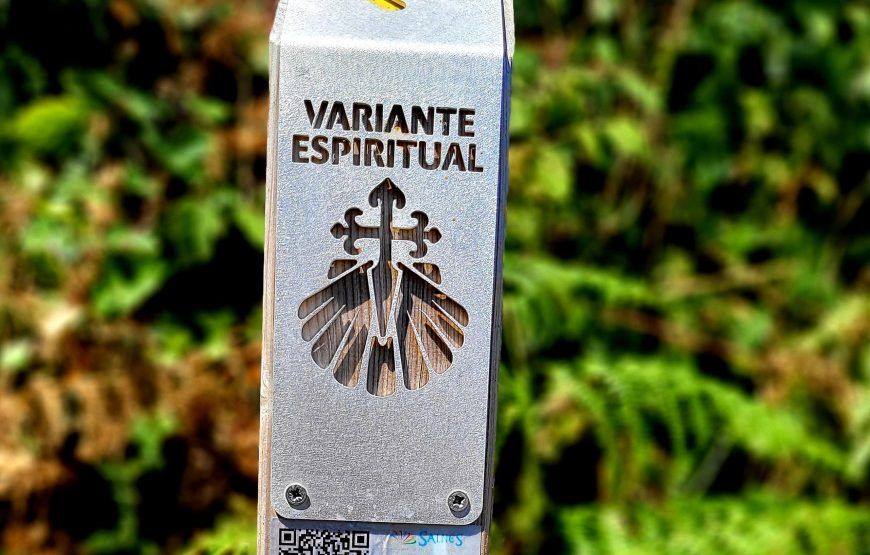
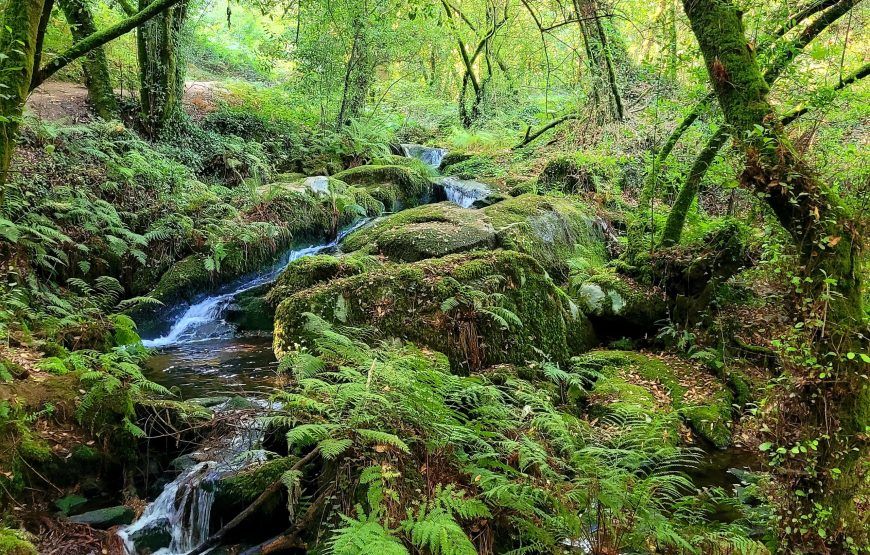
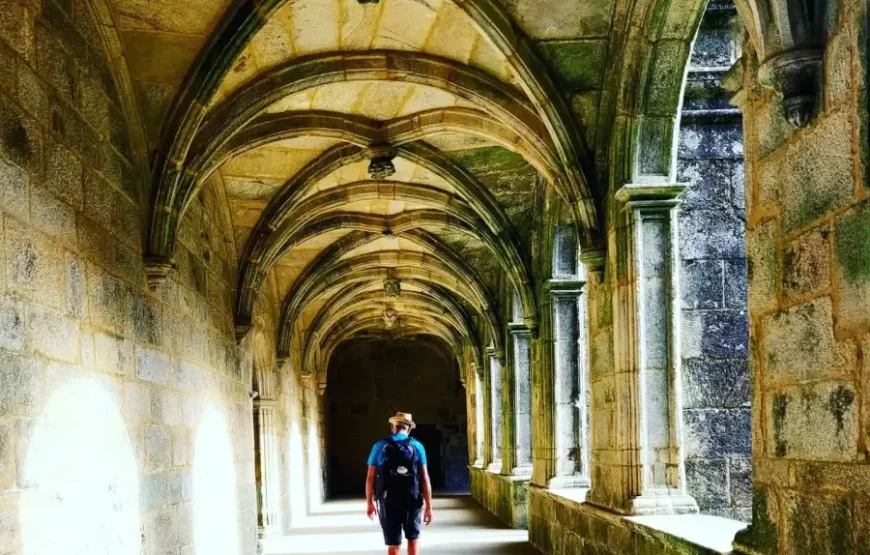
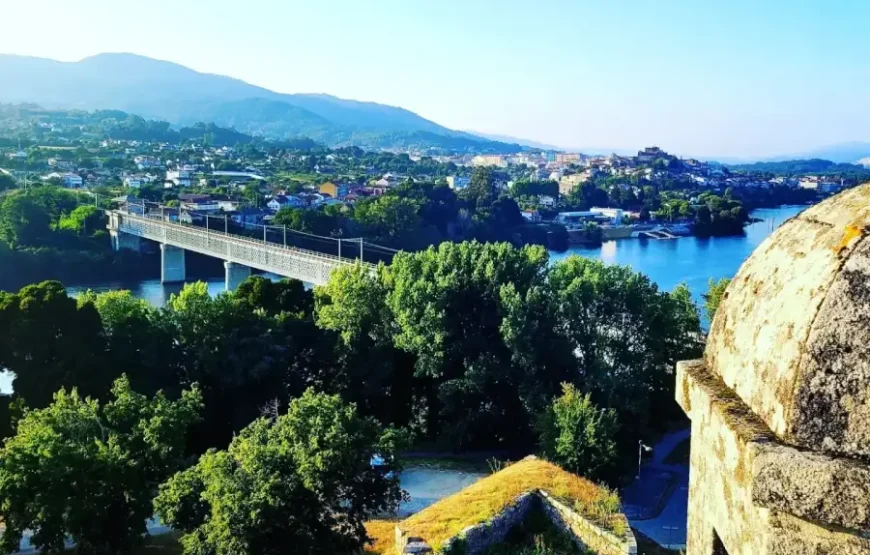
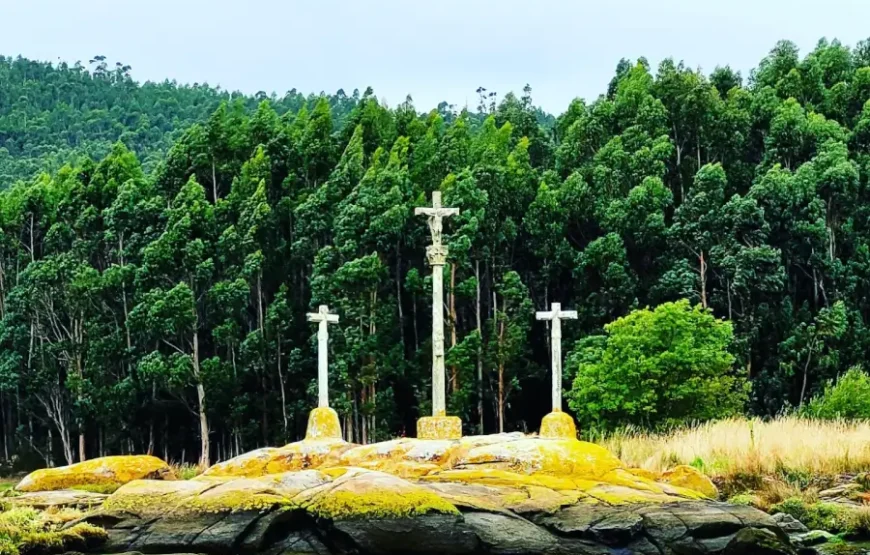
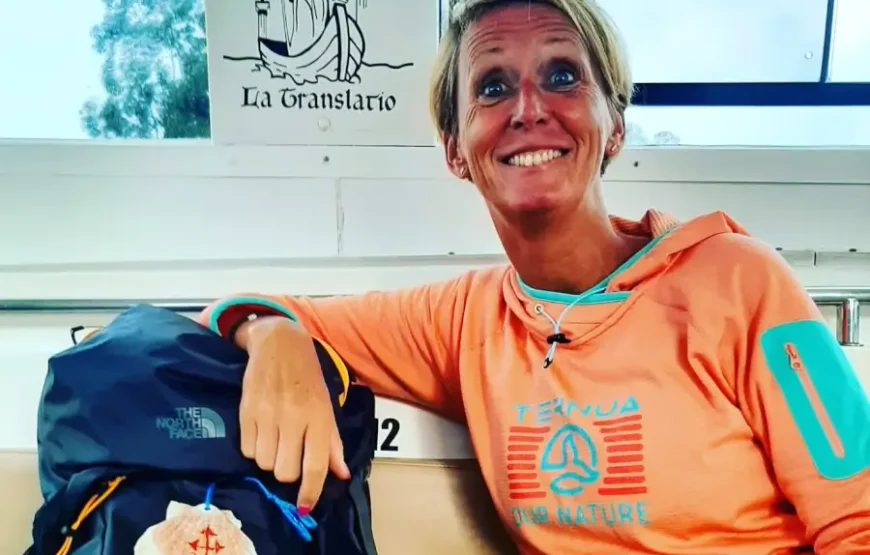
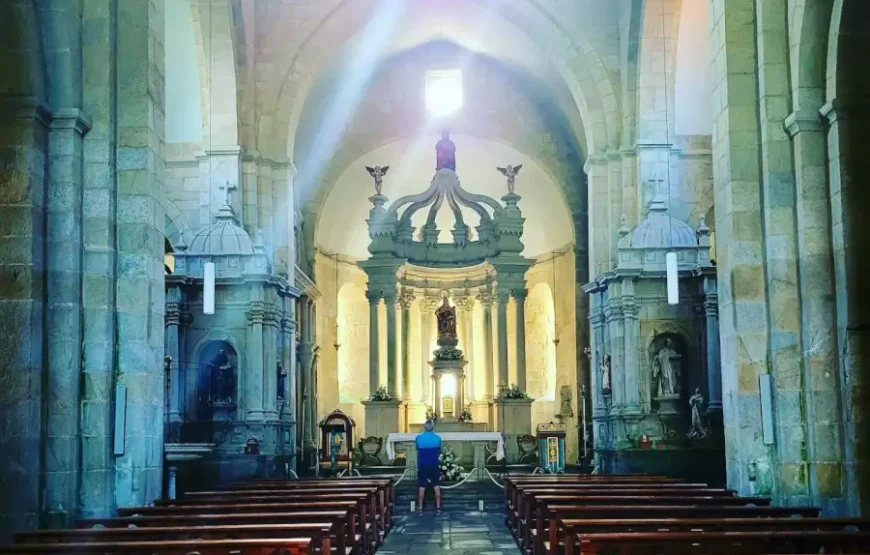
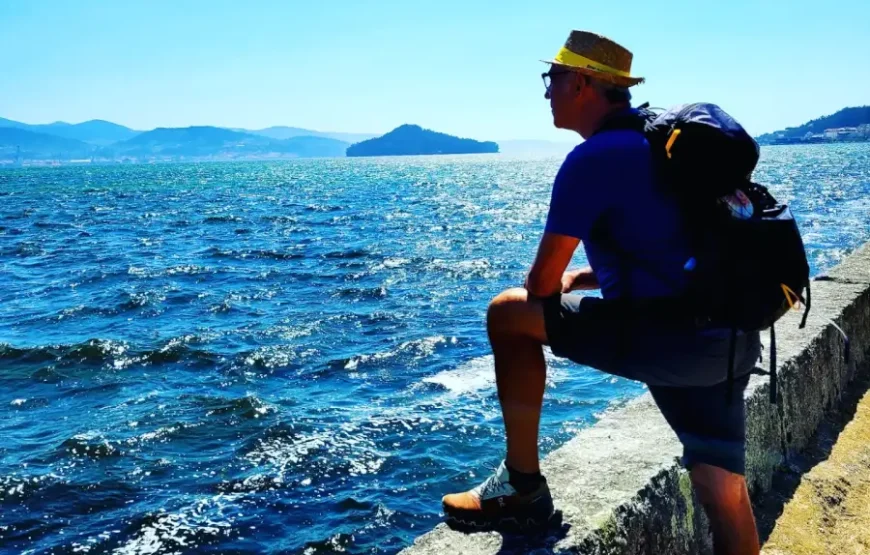
Overview
The Camino Espiritual, a variant of the Portuguese Way starts in the city of Pontevedra and runs for two stages through the beautiful region of O Salnés. Pilgrims on this route will be able to recreate by sea the journey of the remains of the Apostle St. James sailing through the waters of the Arousa estuary.
The Camino Espiritual is the ideal route to live a first experience on the Camino de Santiago away from the crowds. A trip in which you will have the opportunity to know wonderful fishing villages of the Rías Baixas, beautiful coastal landscapes and an exquisite gastronomy based on fish and seafood. You can also enjoy a pleasant sea-river crossing that seeks to recreate the arrival in Galicia of the body of the Apostle St. James, after his martyrdom in Jerusalem.
But in addition to the experience by sea, pilgrims who venture to do this variant will discover beautiful monuments and landscapes, such as the Monastery of Armenteira or the route of A Piedra y da Auga, a beautiful route of 8 km characterized by the presence of dozens of water mills surrounded by dense vegetation.
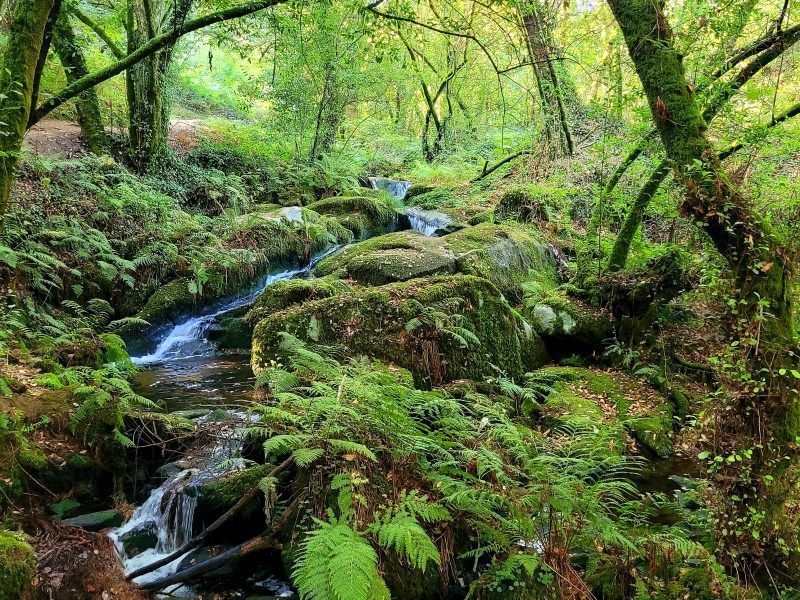
This curious Camino Espiritual can also be started in Pontevedra. This is the perfect route for all those people who want to do a route of the Camino de Santiago and do not have many days. You will be able to complete its 73 kilometers in only 4 stages; a trip for which you won’t need more than five days.
The route of the Camino Espiritual starts in the city of Pontevedra and heads towards the region of O Salnés, reaching the coast again in Vilanova de Arousa. From here the Camino Espiritual crosses the river Ulla upstream until it arrives to disembark in Pontecesures, very close to Padrón. From this point, you continue walking following the same route as the original route of the Camino Portugues to Santiago de Compostela.
Our WAW.travel combines the Camino Espiritual with the first 3 stages of the Camino Portugues.
The Camino Espiritual is a very recent route. It was created around 5 or 6 years ago, connecting places that were historically related to the Camino. It is a unknown route, so quit. The initial part of the Camino spiritual is based on the pilgrimage taken by Padre Sarmiento in 1745. Fray Martín Sarmiento, or Padre Sarmiento, was a Spanish scholar and monk. He wrote on a variety of subjects, including his pilgrimage to Santiago de Compostela. In his record of this pilgrimage he mentions some of the places along the Variante Espiritual. The third stage follows the same route as the remains of St. James on arrival to Galicia, across the Ría de Arousa and up the river Ulla.
After arriving at the airport, go to Valença do Minho in Portugal. You may still have some time to explore this beautiful town, located above the Rio Minho. Maybe you want to cross the brigde to Spain and visit Tui? The one gets lost in the narrow streets. And the cathedral is definitely worth a visit.
You start your Camino Espiritual with the stage from Valença do Minho in Portugal to O Porrino in Spain, over 19 km. A short stage, so you can get in there or visit Tui in the morning. The camino Portugués takes you via a paved road to the medieval bridge over the Rio Louro. Today you walk through the valley of this river. Perhaps immediately one of the most beautiful part of the camino Portugués. The modern city of O Porrino is the end of this stage. You will sleep in Tui.
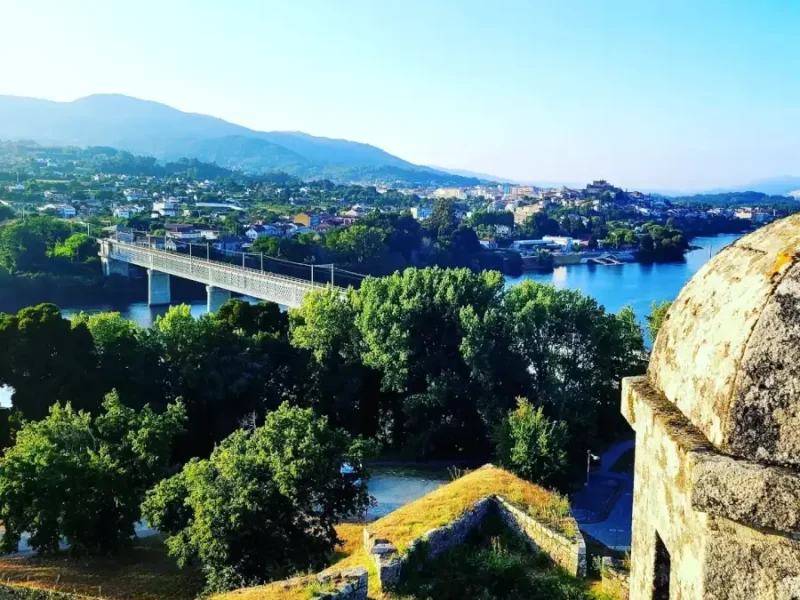
The Camino Espiritual will take you to Redondela today. On the way you keep the Rio Louro in your sights. And you also cross it via a medieval bridge. Today the camino Portugués alternates between forest paths, vineyards and you also pass the highest point of this part of the camino Portugués. Your final destination is Redondela. A beautiful town with a small historic center and beautiful church, dedicated to Santiago. How could it be different…
Today you will again head for Pontevedra through fields and vineyards. At the top of Alto de Lomba you have a magnificent view over the Ria de Vigo. The path now descends to the beautifully coastal Arcade (recommended if you like oysters). Farm roads and rural paths then take you to Pontevedra. A pleasant city with many bars and restaurants. It’s great to relax and get ready for tomorrow’s stage.
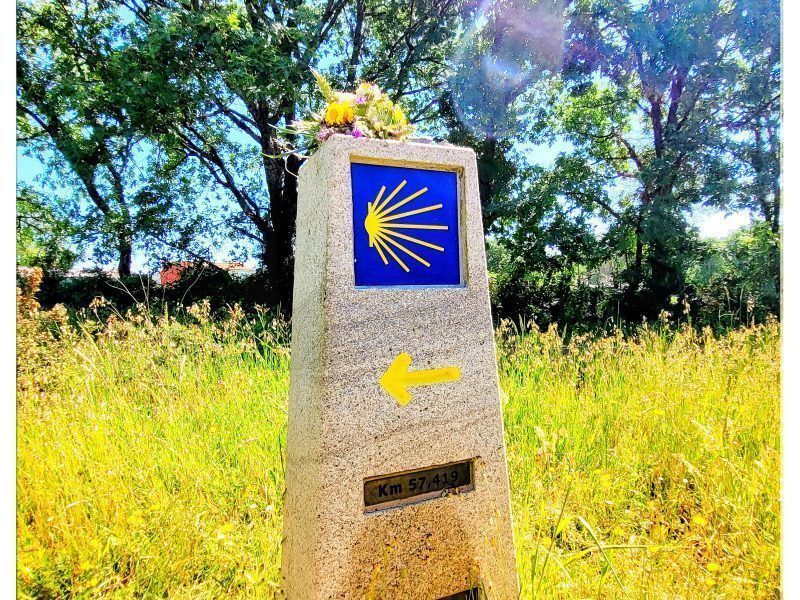
Once in Pontevedra, you choose, after 3 km, to enter the mystical route of the Camino Espiritual, which leaves you in the town of A Armenteira. It is realy well signed, you can’t miss it. In this stage, the main milestones will be the visit to the beautiful village of Combarro with his famous ‘horreos, and the imposing Monastery of Armenteira. And save some energy for the climb to Armenteira. You will need it! You will sleep in the Monastery of Armenteira (if available)
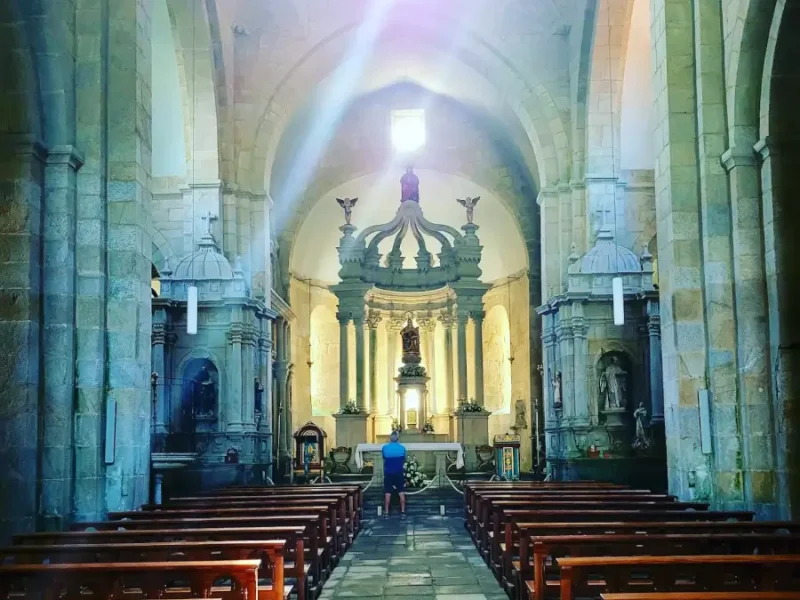
Today on the Camino Espiritual you walk the most beautiful routes in the area, the route of the stone and water (piedra & aqua). Parallel to the river, a lot of trees, the silence and just you. The path stands out for its exuberant riverside vegetation, its bridges, its small waterfalls, and for a succession of old mills that rest on the river bank.You finish today in Vilanova de Arousa. Don’t forget to eat fresh fish…
During this stage you experience the real “Traslatio”. of the Apostle Santiago, starting from Vilanova de Arousa and following the course of the river Ulla upstream until we reach Padrón. Once you arrive to Pontecesures, after crossing the bridge to Padrón, the Camino Espiritual will be finished. From here, you can continue to Santiago de Compostela Santiago de Compostela by the route of the Portuguese Way.
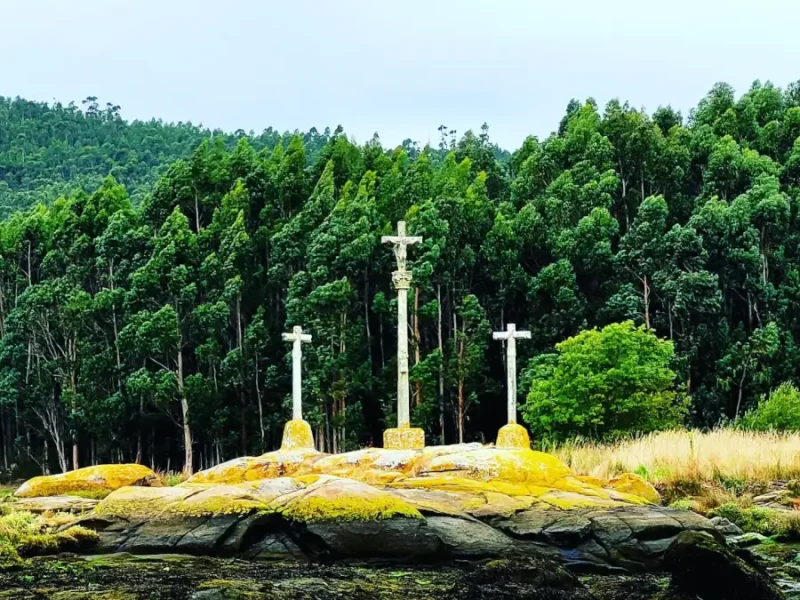
After breakfast you can enjoy the pilgrim town for a while before your journey home starts. If you want to extend your camino Portugués with an extra day in Santiago de Compostela, let us know. It’s definitely worth it!
Do you want to continue your walk to Finisterre or Muxia?
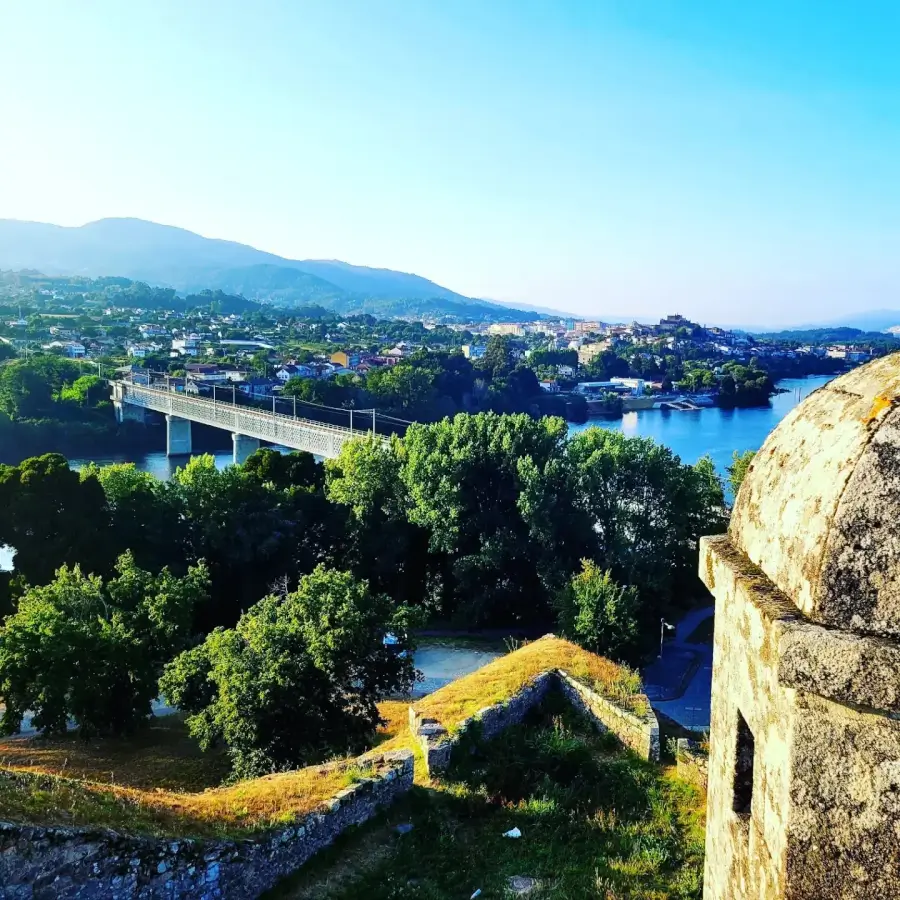
After arriving at the airport, go to Valença do Minho in Portugal. You may still have some time to explore this beautiful town, located above the Rio Minho. Maybe you want to cross the brigde to Spain and visit Tui? The one gets lost in the narrow streets. And the cathedral is definitely worth a visit.
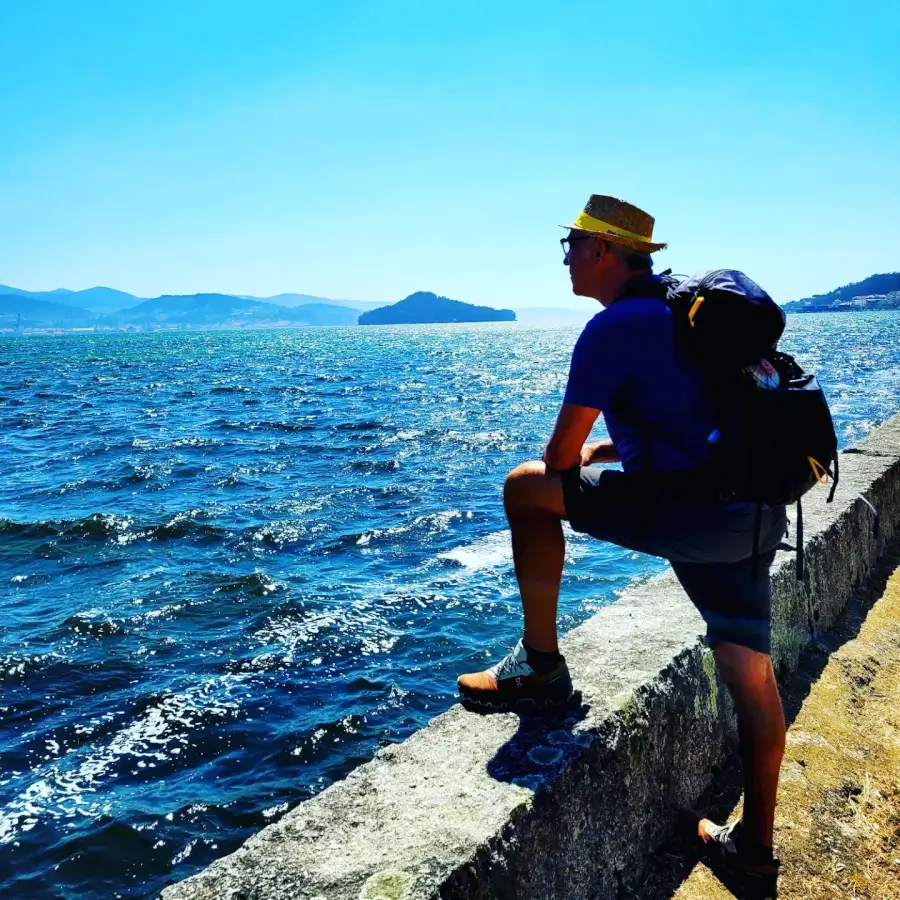
You start your pilgrimage with the stage from Valença do Minho in Portugal to O Porrino in Spain, over 19 km. A short stage, so you can get in there or visit Tui in the morning. The camino Portugués takes you via a paved road to the medieval bridge over the Rio Louro. Today you walk through the valley of this river. Perhaps immediately one of the most beautiful part of the camino Portugués. The modern city of O Porrino is the end of this stage. You will sleep in Tui.
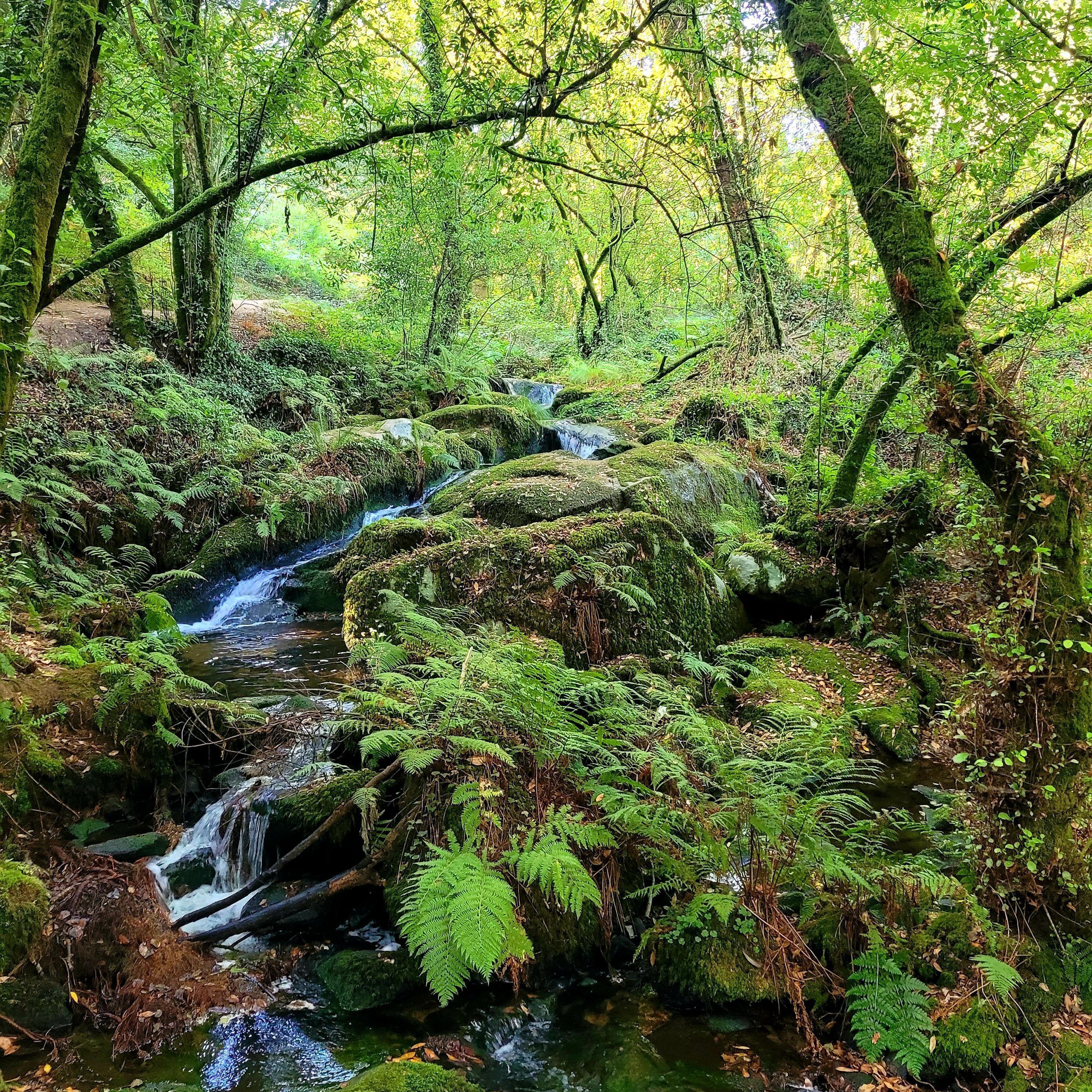
The camino Portugués will take you to Redondela today. On the way you keep the Rio Louro in your sights. And you also cross it via a medieval bridge. Today the camino Portugués alternates between forest paths, vineyards and you also pass the highest point of this part of the camino Portugués. Your final destination is Redondela. A beautiful town with a small historic center and beautiful church, dedicated to Santiago. How could it be different...
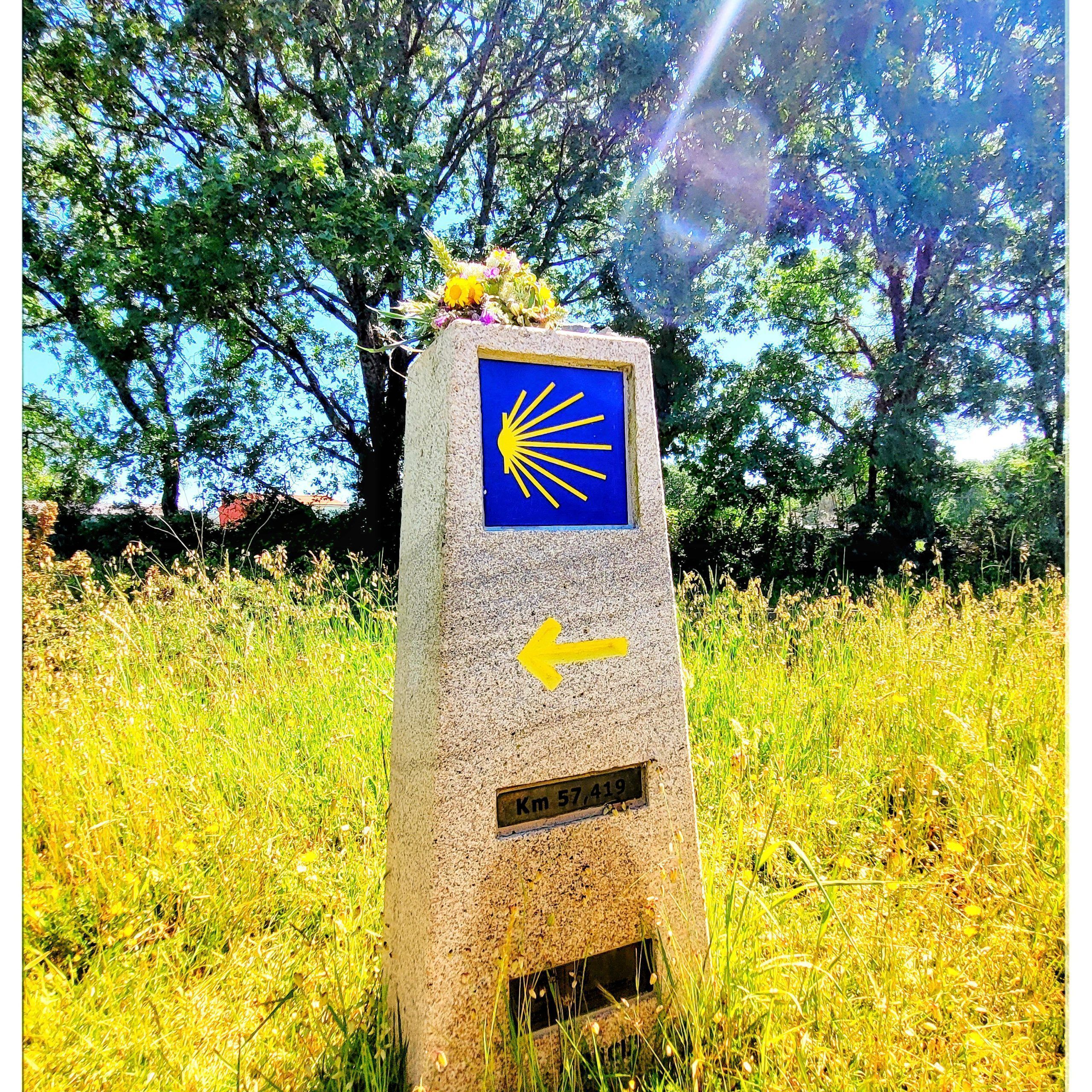
Today you will again head for Pontevedra through fields and vineyards. At the top of Alto de Lomba you have a magnificent view over the Ria de Vigo. The path now descends to the beautifully coastal Arcade (recommended if you like oysters). Farm roads and rural paths then take you to Pontevedra. A pleasant city with many bars and restaurants. It's great to relax and get ready for tomorrow's stage.
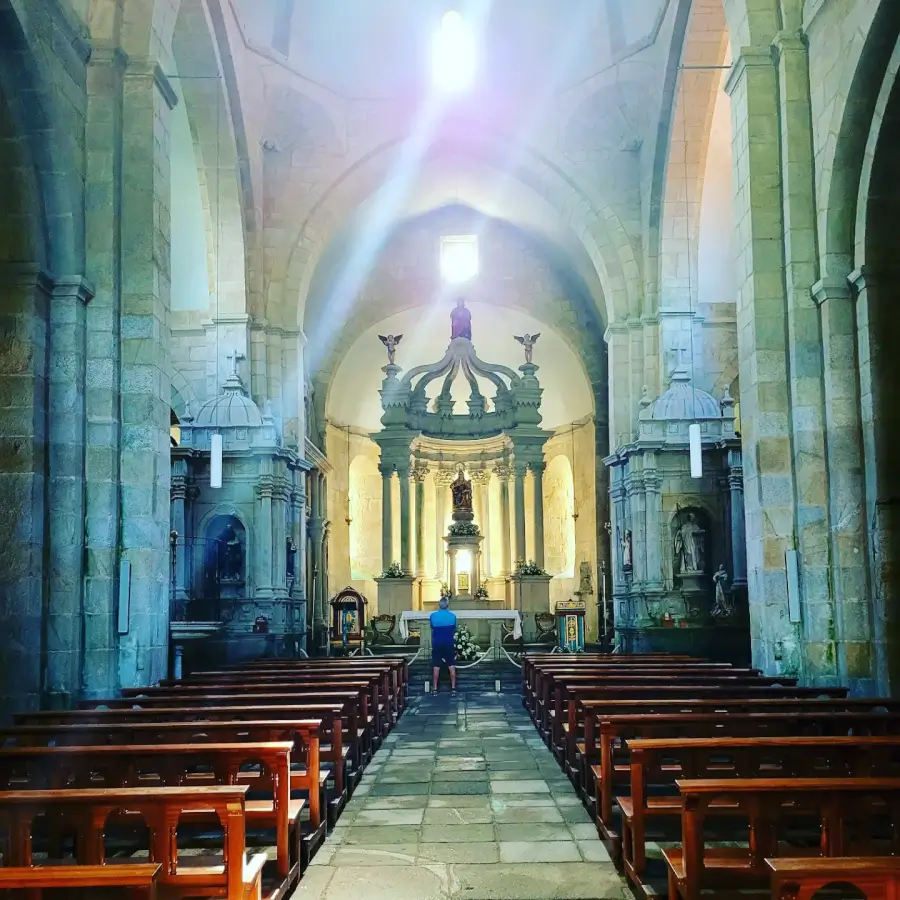
Once in Pontevedra, you choose, after 3 km, to enter the mystical route of the spiritual variant, which leaves you in the town of A Armenteira. It is realy well signes, you can't miss it. In this stage, the main milestones will be the visit to the beautiful village of Combarro with his famous 'horreos, and the imposing Monastery of Armenteira. And save some energy for the climb to Armenteira. You will need it! You will sleep in the Monastery of Armenteira (if available)
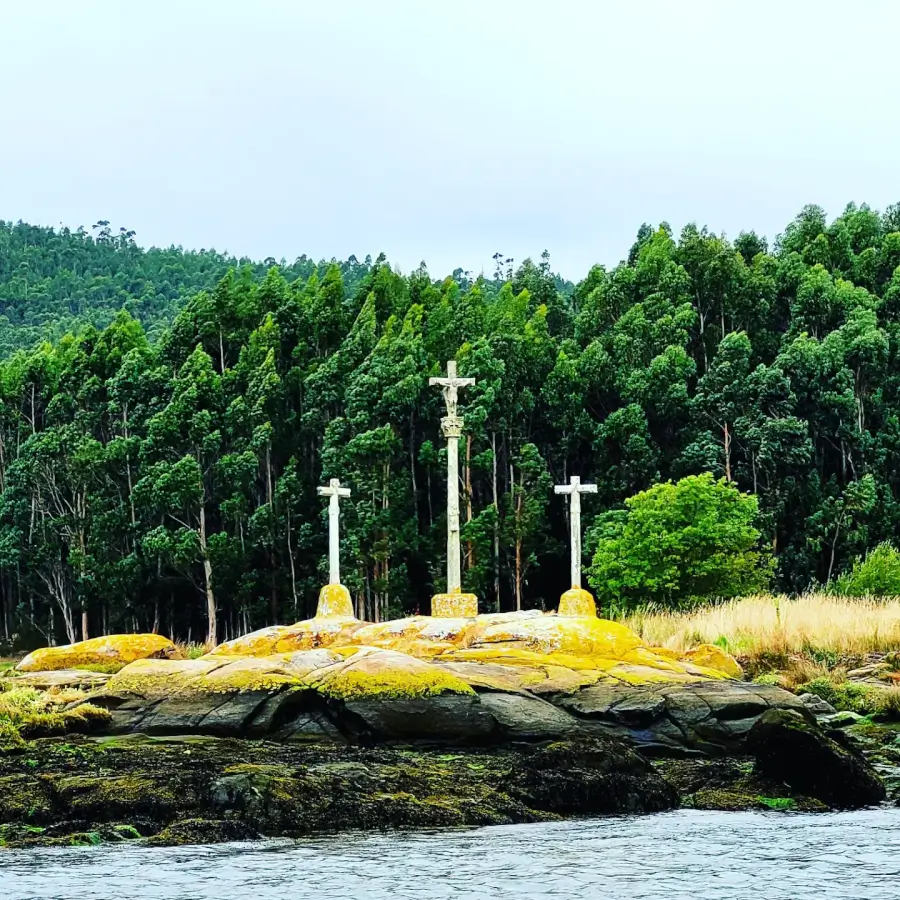
Today you walk the most beautiful routes in the area, the route of the stone and water (piedra & aqua). Parallel to the river, a lot of trees, the silence and just you. The path stands out for its exuberant riverside vegetation, its bridges, its small waterfalls, and for a succession of old mills that rest on the river bank.You finish today in Vilanova de Arousa. Don't forget to eat fresh fish...
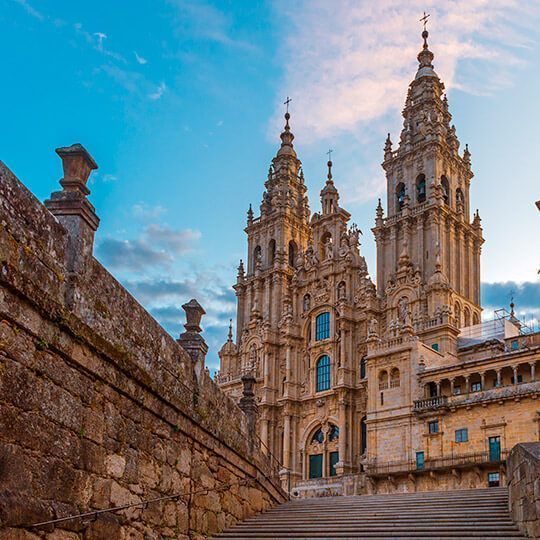
During this stage you experience the real “Traslatio”. of the Apostle Santiago, starting from Vilanova de Arousa and following the course of the river Ulla upstream until we reach Padrón. Once you arrive to Pontecesures, after crossing the bridge to Padrón, the Camino Espiritual will be finished. From here, you can continue to Santiago de Compostela Santiago de Compostela by the route of the Portuguese Way.
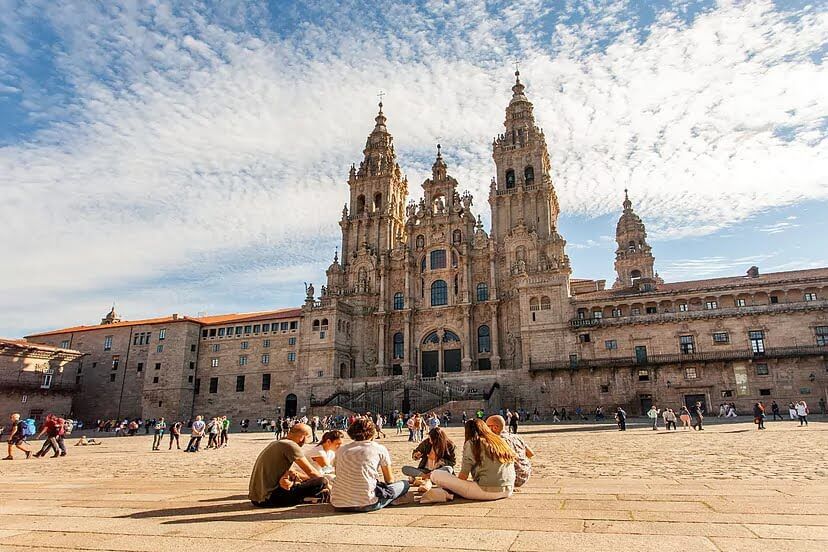
After breakfast you can enjoy the pilgrim town for a while before your journey home starts. If you want to extend your camino Portugués with an extra day in Santiago de Compostela, let us know. It's definitely worth it!
The pilgrimage route to Santiago de Compostella (also called Saint James route or Way of Saint James) is the pilgrimage route to the tomb of the apostle James in Santiago de Compostella in Spain. The main route through Spain is the Camino Francés, which runs from the Pyrenees to the tomb of James. This route passes through the cities of Pamplona, Estella, Logroño, Burgos, León, Astorga and Ponferrada.
Although the camino is accessible to everyone, experience and good physical condition are recommended.
On the way you walk with a small backpack. In it you put some things you need for on the go. Think of some food, drinks, sunscreen, a raincoat. The rest of your luggage is taken from accommodation to accommodation.
You can contact us anytime and we will like for a solution together.
The Camino Espiritual is a very recent route. It was created around 5 or 6 years ago, connecting places that were historically related to the Camino. It is a unknown route, so quit. The initial part of the Camino spiritual is based on the pilgrimage taken by Padre Sarmiento in 1745. Fray Martín Sarmiento, or Padre Sarmiento, was a Spanish scholar and monk. He wrote on a variety of subjects, including his pilgrimage to Santiago de Compostela. In his record of this pilgrimage he mentions some of the places along the Variante Espiritual. The third stage follows the same route as the remains of St. James on arrival to Galicia, across the Ría de Arousa and up the river Ulla.